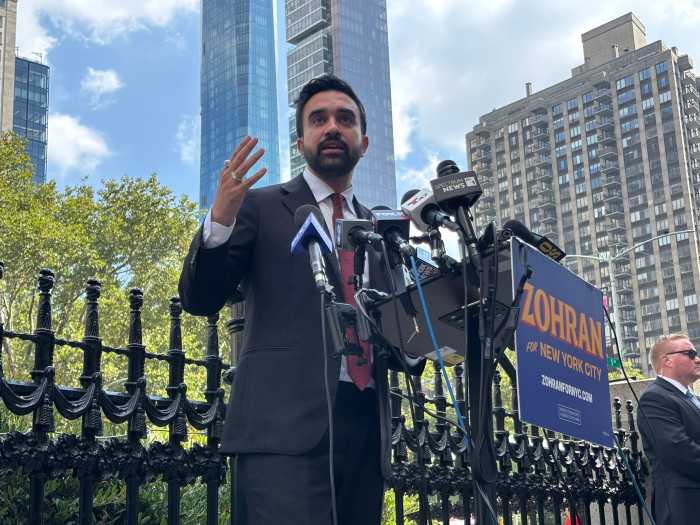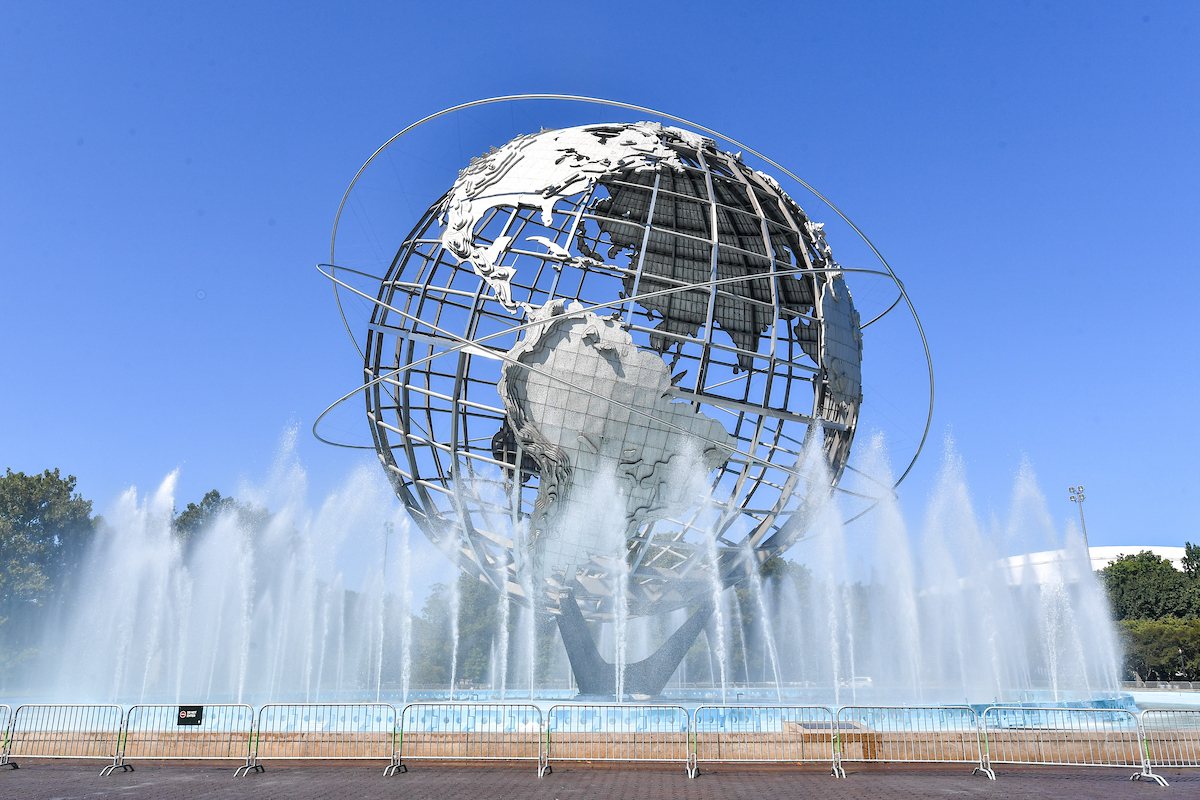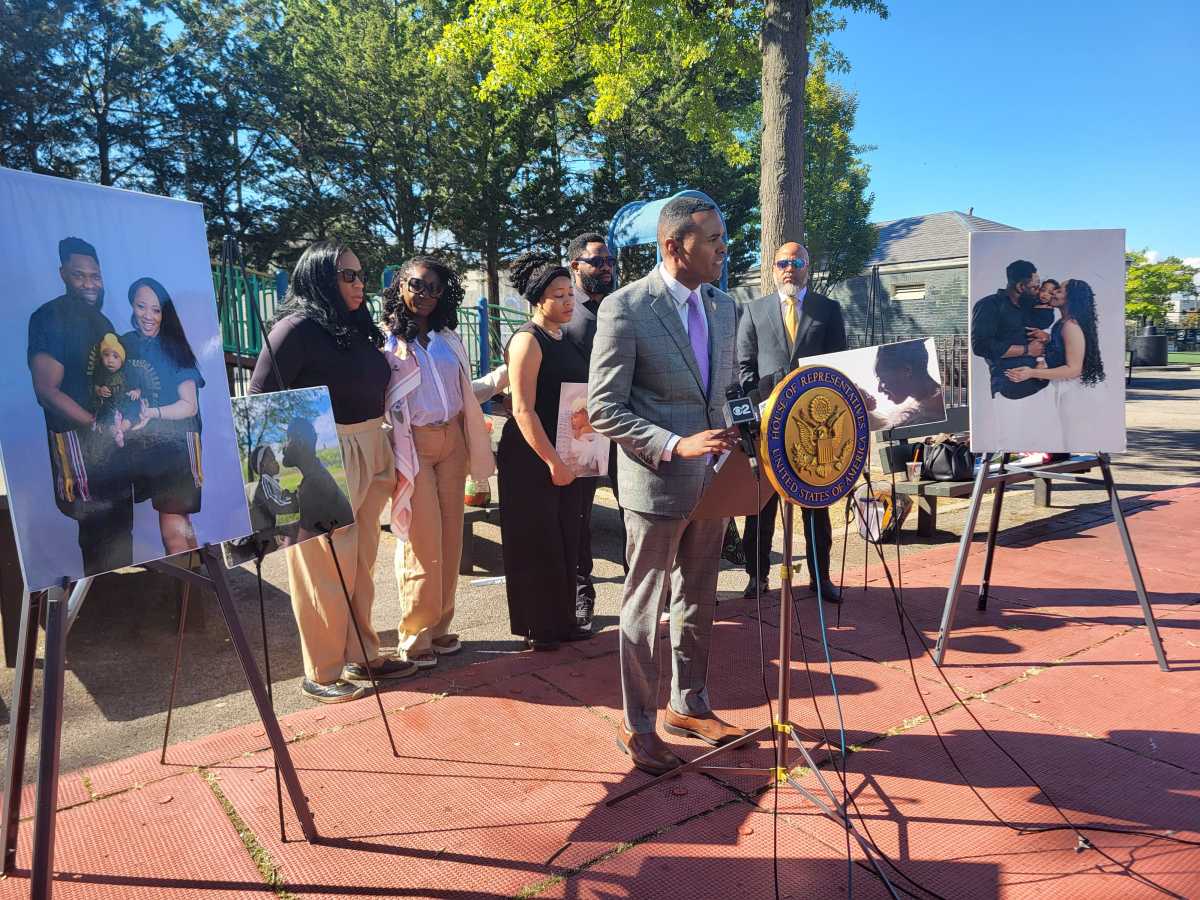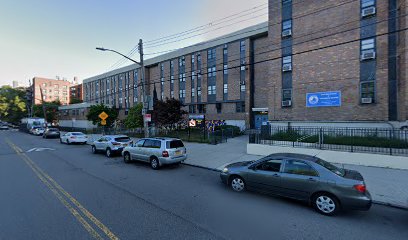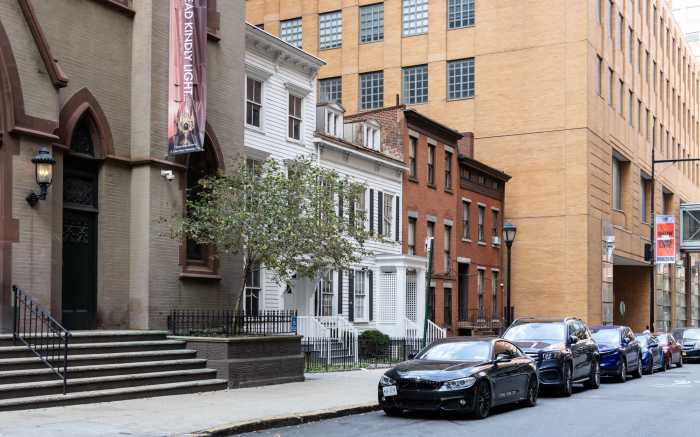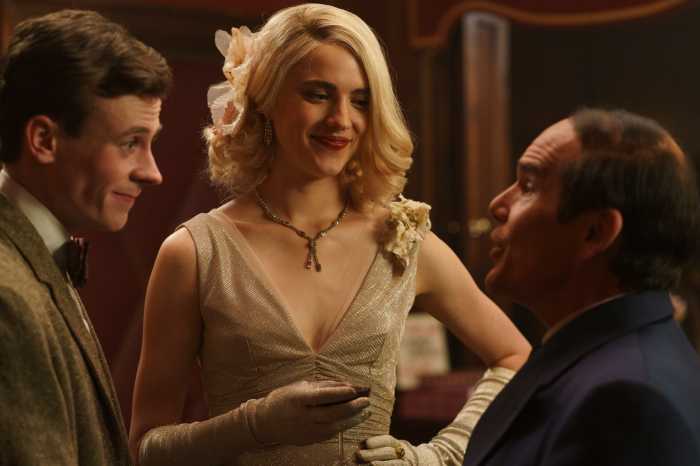-
 Even with permission from the city, getting to North Brother Island is tricky. The first thing it requires is boat transportation, in this case provided by Bronx nonprofit Rocking the Boat, which helps students in the South Bronx learn to build boats and sail in the Bronx River. Pictured is Mitchell Silver, the city parks commissioner, who opted for the steadier of the two vessels.
Even with permission from the city, getting to North Brother Island is tricky. The first thing it requires is boat transportation, in this case provided by Bronx nonprofit Rocking the Boat, which helps students in the South Bronx learn to build boats and sail in the Bronx River. Pictured is Mitchell Silver, the city parks commissioner, who opted for the steadier of the two vessels.
Even so, docking at the island is tough because there really isn’t a dock. The boat pulled up against some old pilings, where visitors climbed out onto wooden planks. You can’t overstay your welcome: The tour rushed back to the “dock” as low tide began, and a bit of a jump was required to board the boat.
” data-id=”112440817″ data-link=”https://amnewyork.wpengine.com/wp-content/uploads/2019/10/14139_image.jpg” class=”wp-image-1.12440817″/>
Photo Credit: Jillian Jorgensen -
 Other visitors on this inflatable boat were more adventurous, including City Council Speaker Melissa Mark-Viverito, waving at the far right.
Other visitors on this inflatable boat were more adventurous, including City Council Speaker Melissa Mark-Viverito, waving at the far right.
” data-id=”112440807″ data-link=”https://amnewyork.wpengine.com/wp-content/uploads/2019/10/14141_image.jpg” class=”wp-image-1.12440807″/>
Photo Credit: Jillian Jorgensen -
 Approaching the island, an old gantry crane and a smokestack come into view.
Approaching the island, an old gantry crane and a smokestack come into view.
“The smokestacks from the old boiler room are actually shedding bricks,” warned John Krawchuk, executive director of the city Parks Department’s Historic House Trust. He’s visited North Brother Island about 20 times — and some of the buildings that were standing on his first trip have since collapsed.
” data-id=”112440815″ data-link=”https://amnewyork.wpengine.com/wp-content/uploads/2019/10/14143_image.jpg” class=”wp-image-1.12440815″/>
Photo Credit: Jillian Jorgensen -
 Without a proper dock, the boat was tied to the old pilings near the crane. To allow more visitors to the island, a more proper dock would be needed.
Without a proper dock, the boat was tied to the old pilings near the crane. To allow more visitors to the island, a more proper dock would be needed.
“You’d have to install a boat landing, which means you’re going to have to have urban parks rangers there to secure it,” Parks Commissioner Mitchell Silver said.
” data-id=”112440823″ data-link=”https://amnewyork.wpengine.com/wp-content/uploads/2019/10/14145_image.jpg” class=”wp-image-1.12440823″/>
Photo Credit: Jillian Jorgensen -
 Take a closer look at the gantry, which would have lifted cargo off boats to service the island — once a fully functioning city unto itself, with cars, roads and even tennis courts. The island was last used as a rehabilitation center for drug-addicted youth, many of whom were addicted to heroin, before the facility was shuttered in 1964 and eventually overcome by nature.
Take a closer look at the gantry, which would have lifted cargo off boats to service the island — once a fully functioning city unto itself, with cars, roads and even tennis courts. The island was last used as a rehabilitation center for drug-addicted youth, many of whom were addicted to heroin, before the facility was shuttered in 1964 and eventually overcome by nature.” data-id=”112440814″ data-link=”https://amnewyork.wpengine.com/wp-content/uploads/2019/10/14147_image.jpg” class=”wp-image-1.12440814″/>
Photo Credit: Jillian Jorgensen -
 “It essentially served as its own city — you have power being provided by the coal house, and heat. Water was eventually brought over, fresh potable water from the Bronx,” said the Historic House Trust’s John Krawchuk, pictured. “If you can imagine, this island was really vegetation-less: It was just grass and a few trees.”
“It essentially served as its own city — you have power being provided by the coal house, and heat. Water was eventually brought over, fresh potable water from the Bronx,” said the Historic House Trust’s John Krawchuk, pictured. “If you can imagine, this island was really vegetation-less: It was just grass and a few trees.”
” data-id=”112440818″ data-link=”https://amnewyork.wpengine.com/wp-content/uploads/2019/10/14149_image.jpg” class=”wp-image-1.12440818″/>
Photo Credit: Jillian Jorgensen -
 Since then, vegetation has taken over, surrounding and invading the old power plant. But Jennifer Greenfeld, assistant parks commissioner for forestry, horticulture, and natural resources, noted the island likely was lush before the Sisters of Charity came to town in 1881 to help the sick. Like the rest of New York City, the island was created by the movement of massive glaciers that deposited soil and rocks.
Since then, vegetation has taken over, surrounding and invading the old power plant. But Jennifer Greenfeld, assistant parks commissioner for forestry, horticulture, and natural resources, noted the island likely was lush before the Sisters of Charity came to town in 1881 to help the sick. Like the rest of New York City, the island was created by the movement of massive glaciers that deposited soil and rocks.
“North Brother Island is this strange little leftover,” she said.
” data-id=”112440802″ data-link=”https://amnewyork.wpengine.com/wp-content/uploads/2019/10/14151_image.jpg” class=”wp-image-1.12440802″/>
Photo Credit: Jillian Jorgensen -

Photo Credit: Jillian Jorgensen -

Photo Credit: Jillian Jorgensen -
 This boys dormitory is one of the island’s oldest buildings, dating to 1855 and built by famous architect Charles Coolidge Haight, and is in surprisingly good condition. It’s one of a handful being considered for restoration for some possible future use.
This boys dormitory is one of the island’s oldest buildings, dating to 1855 and built by famous architect Charles Coolidge Haight, and is in surprisingly good condition. It’s one of a handful being considered for restoration for some possible future use.
“We’re not talking about creating the next Governor’s Island, with people running around at will,” said Mark Levine, the councilman. “This is a way for groups of students and people who care about the history of the city and the incredible ecology in this region to experience, in person, what you just can’t read about.”
” data-id=”112441356″ data-link=”https://amnewyork.wpengine.com/wp-content/uploads/2019/10/14155_image.jpg” class=”wp-image-1.12441356″/>
Photo Credit: Jillian Jorgensen -

Photo Credit: Jillian Jorgensen -
 Ivy has taken over the floor of the island and the walls of many of the rooms — and makes for a picturesque setting that members of the tour can’t resist photographing.
Ivy has taken over the floor of the island and the walls of many of the rooms — and makes for a picturesque setting that members of the tour can’t resist photographing.
” data-id=”112440805″ data-link=”https://amnewyork.wpengine.com/wp-content/uploads/2019/10/14159_image.jpg” class=”wp-image-1.12440805″/>
Photo Credit: Jillian Jorgensen -

Photo Credit: Jillian Jorgensen -

Photo Credit: Jillian Jorgensen -

Photo Credit: Jillian Jorgensen -

Photo Credit: Jillian Jorgensen -

Photo Credit: Jillian Jorgensen -

Photo Credit: Jillian Jorgensen -
 This building, a former coal house, is another being considered for rehabilitation. But the Historic House Trust’s John Krawchuk noted that such a construction project on an isolated island would not be an easy task because all materials and equipment would need to arrive by boat.
This building, a former coal house, is another being considered for rehabilitation. But the Historic House Trust’s John Krawchuk noted that such a construction project on an isolated island would not be an easy task because all materials and equipment would need to arrive by boat.
After serving as a hospital, the island briefly housed World War II veterans in the late 1940s — who found it too isolated — before it was taken over for drug rehab. When the city ended that use in 1964, several ideas were discussed. Mayor John Lindsay wanted to sell the island, Krawchuk said, while Ed Koch considered a homeless shelter there. In the 1990s, building a jail as an expansion of nearby Rikers Island was explored. But ultimately, Krawchuk said, the city realized any project there would be “very expensive to build and very expensive to maintain.”
” data-id=”112440791″ data-link=”https://amnewyork.wpengine.com/wp-content/uploads/2019/10/14174_image.jpg” class=”wp-image-1.12440791″/>
Photo Credit: Jillian Jorgensen -
 This stately building was once the nurses’ pavilion, home to some of the staff who lived on the island full time. (Other staff commuted by ferry.) The dead vines climbing up the side are poison ivy the city is trying to fight back. Parks officials seek to kill the vines rather than pull them because yanking on them also can take part of the building down.
This stately building was once the nurses’ pavilion, home to some of the staff who lived on the island full time. (Other staff commuted by ferry.) The dead vines climbing up the side are poison ivy the city is trying to fight back. Parks officials seek to kill the vines rather than pull them because yanking on them also can take part of the building down.
” data-id=”112440824″ data-link=”https://amnewyork.wpengine.com/wp-content/uploads/2019/10/14177_image.jpg” class=”wp-image-1.12440824″/>
Photo Credit: Jillian Jorgensen -
 Those who lived on the island had access to services and amenities without having to leave for the mainland — including tennis courts.
Those who lived on the island had access to services and amenities without having to leave for the mainland — including tennis courts.
” data-id=”112440827″ data-link=”https://amnewyork.wpengine.com/wp-content/uploads/2019/10/20465_image.jpg” class=”wp-image-1.12440827″/>
Photo Credit: Jillian Jorgensen -

Photo Credit: Jillian Jorgensen -

Photo Credit: Jillian Jorgensen -
 After a walk through thick ivy and over fallen tree limbs, the tour arrived at the biggest building remaining on the island — the former “Tuberculosis Pavilion.” The structure was built in early 1940s but soon became obsolete as a quarantine facility following the discovery of effective antibiotics.
After a walk through thick ivy and over fallen tree limbs, the tour arrived at the biggest building remaining on the island — the former “Tuberculosis Pavilion.” The structure was built in early 1940s but soon became obsolete as a quarantine facility following the discovery of effective antibiotics.
” data-id=”112440808″ data-link=”https://amnewyork.wpengine.com/wp-content/uploads/2019/10/14181_image.jpg” class=”wp-image-1.12440808″/>
Photo Credit: Jillian Jorgensen -

Photo Credit: Jillian Jorgensen -

Photo Credit: Jillian Jorgensen -
 City Council Speaker Melissa Mark-Viverito wanted to know how close she could get to the doorway of the facility. She was asked not to step under the old awning.
City Council Speaker Melissa Mark-Viverito wanted to know how close she could get to the doorway of the facility. She was asked not to step under the old awning.
“I think this is incredible. This is such a part of New York City history about what happened here,” she said. “So clearly the idea of maybe restoring one building or making it more accessible to the public is a great idea. But there’s a lot of work that entails, and a lot of public money. That’s not going to happen in my lifetime, I don’t think. But this is beautiful.”
” data-id=”112440806″ data-link=”https://amnewyork.wpengine.com/wp-content/uploads/2019/10/14186_image.jpg” class=”wp-image-1.12440806″/>
Photo Credit: Jillian Jorgensen -
 There was a rush back to the dock to reach the boat before high tide made that too difficult. On the way, Mitchell Silver, the parks commissioner, studiously pointed out pockets of poison ivy and advised visitors who might have been exposed to pick up some special soap to remove the oils. (Dish soap works, too.)
There was a rush back to the dock to reach the boat before high tide made that too difficult. On the way, Mitchell Silver, the parks commissioner, studiously pointed out pockets of poison ivy and advised visitors who might have been exposed to pick up some special soap to remove the oils. (Dish soap works, too.)
Mark Levine, the councilman, is hopeful there will be chaperoned, curated trips in the future for groups interested in North Brother Island’s history and environment.
“It’s not the same to look at pictures: You have to walk on the island to feel the enchantment you all experienced today,” he said.
” data-id=”112440809″ data-link=”https://amnewyork.wpengine.com/wp-content/uploads/2019/10/14188_image.jpg” class=”wp-image-1.12440809″/>
Photo Credit: Jillian Jorgensen
North Brother Island is technically New York City parkland, but almost nobody gets to step foot on it.
Some city officials are trying to change that.
“You shouldn’t have to be a councilman or a reporter to visit North Brother Island,” said Councilman Mark Levine, who heads the council’s Parks Committee and has led the call for increased visits.
Forgotten in the East River between the Bronx’s Port Morris and Rikers Island, North Brother Island is 20 acres of paradise for urban explorers with a taste for decay. The one-time quarantine island was home to the infamous Typhoid Mary, whose cottage has long since crumbled, but still standing is a towering, overgrown and ransacked Art Deco building dubbed the “Tuberculosis Pavilion,” part of the former Riverside Hospital.
“Amazing. Enchanting. Romantic,” Parks Commissioner Mitchell Silver said after a visit.
A tour for city officials and members of the media on Tuesday, Oct. 11, 2016, was part of Levine’s ongoing campaign to expand access to the island, something currently being studied by PennPraxis, which is affiliated with the University of Pennsylvania’s School of Design.
“To both restore it, maintain it and manage it would be a very expensive undertaking,” Silver said. “But it is tempting.”
In the meantime, the island remains hard to reach — even if you’re part of a flotilla that includes high-ranking city officials. Until that changes, you can explore the island in photographs.




